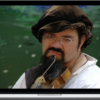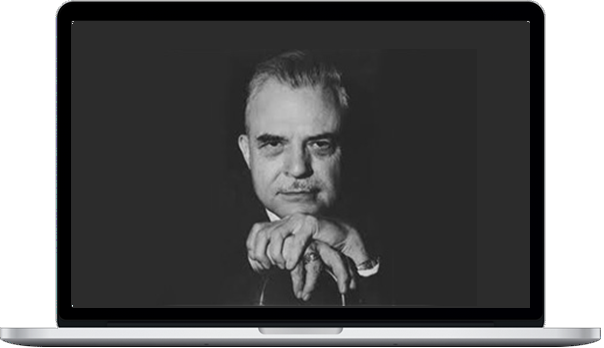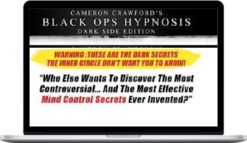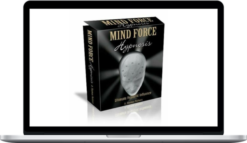Milton Erickson – Hypnotherapy An Exploratory Casebook
$31.00 $9.00
Total Sold: 1
»Instant Delivery
Description
Milton Erickson – Hypnotherapy An Exploratory Casebook
Description Of Hypnotherapy An Exploratory Casebook
The present work is the second in a series of volumes by the authors that began with the publication of Hypnotic Realities (Irvington, 1976). Like that first volume, the present work is essentially the record of the senior author’s efforts to train the junior author in the field of clinical hypnotherapy. As such, the present work is not of an academic or scholarly nature but rather a practical study of some of the attitudes, orientations, and skills required of the modern hypnotherapist.
In the first chapter we outline the utilization approach to hypnotherapy as the basic orientation to our work. In the second chapter we essay a more systematic presentation of the indirect forms of suggestion, which were originally selected out of the case presentations of our first volume. We now believe that the utilization approach and the indirect forms of suggestion are the essence of the senior author’s therapeutic innovations over the past fifty years and account for much of his unique skill as a hypnotherapist.
In Chapter Three we illustrate how the utilization approach and the indirect forms of suggestion can be integrated to facilitate the induction of therapeutic trance in a manner that simultaneously orients the patient toward therapeutic change. In our fourth chapter we illustrate the approaches to posthypnotic suggestion that the senior author has found most effective in day-to-day clinical practice. These first four chapters outline some of the basic principles of the senior author’s approach.
At the end of each of these first four chapters we have suggested a number of exercises to facilitate learning the orientation, attitudes, and skills required of anyone who wants to put some of this material into actual practice. Each of the remaining six chapters presents case studies illustrating and further exploring the senior author’s clinical work with patients.
Most of the other shorter cases were drawn from the senior author’s file of unpublished records of his work in private practice, some of them from long-unopened folders containing yellowed pages more than a quarter of a century old. These cases were all reviewed and re-edited with fresh commentaries and provide an appropriate perspective on the spontaneous creativity and daring required of the hypnotherapist in clinical practice. In addition, we have skimmed through many tape recordings of the senior author’s lectures and workshops at the meetings of the American Society of Clinical Hypnosis.
Some of these were already typed and partially edited by Florence Sharp, Ph.D., and other members of the Society. Most of these appear under the heading Selected Shorter Cases: Exercises for Analysis. Many of them have been repeated and published so often (Haley, 1973) that they appear anecdotal, as part of the folklore of hypnosis in the past half-century. They can serve as marvelous exercises for analysis, however. At the end of each such case we have placed in italics some of the principles we feel were involved. The reader may enjoy finding others.
It is our impression that the clinical practice of hypnotherapy is currently emerging from a period of relative quiescence into an exciting time of new discoveries and fascinating possibilities. Those who know the history of hypnosis are already familiar with this cyclic pattern of excitement and quiescence that is so characteristic of the field. Some historians of science now believe this cyclic pattern is characteristic of all branches of science and art: The excitement comes with periods of new discovery, the quiescence comes as these are assimilated.
As the junior author gradually put this volume together, he frequently had a subjective sense of new discovery. But was it new only for him, or would it be new for others as well? We must rely upon you, our reader, to make an independent assessment of the matter and perhaps carry the work a step further. – Milton H. Erickson, M.D. Ernest L. Rossi, Ph.D.
About Milton Erickson
Milton Erickson, MD (1901 – 1980) was a psychiatrist and psychologist regarded by many as the foremost practitioner of medical hypnosis in his time. He wrote “Hypnotic Realities” and many other books dedicated to the “Art of Hypnosis” and which document the many things he learned while treating the many patients he encountered.
Milton Erickson is considered the father of modern hypnotherapy. The therapy he engendered, Ericksonian hypnotherapy, is one of the fastest growing and influential branches of hypnotherapy today. His methods have inspired short term strategic therapy, the rebirth of guided imagery, and NLP (Neuro-Linguistic Programming) to name a few. Even John Bradshaw, in both of his acclaimed series on PBS, frequently quotes Erickson and calls him “the greatest therapist who ever lived.”
Milton Erickson was a scientist and deeply gifted hypnotist. Erickson knew how to hypnotize people and could do so in an instant. Milton Erickson was internationally acclaimed, in his lifetime, as one of the world’s leading medical hypnotherapists.
Milton Erickson was educated in the psychoanalytic tradition but he did not accept the premise of incompatibility of basic human urges and civilized living standards. During World War II, he worked for the Selective Service and examined literally thousands of young draftees. From this experience, he expanded his understanding of human nature and gained a larger appreciation for the vastness of the normal human life. He also began his understanding that a very brief encounter could have significant information contained and exchanged. The seeds of brief and strategic therapy were sown.
Even though he had a great faith in the basic goodness and normalcy of most people and used that as a part of his therapy, Erickson recognized mental illness and pathologies. Cutting his professional teeth before the advent of psychotropic drugs, and having done part of his internship in a prison hospital, Erickson knew the depths mental illnesses could create.
The name Milton Erickson has become almost synonymous with “indirect metaphors and storytelling.” He often believed that approaching a problem indirectly was most effective because it allowed patients independence and dignity, and bypassed resistance because it did not require direct information from the therapist. He did not hesitate, however, in being extremely direct and forceful. He also did not hesitate to make clear he had strong morals and that the right way for people to behave is with consideration, kindness and respect toward themselves and others. He valued the discipline that came from hard work and believed that almost every experience contained a seed of valuable learning.
Erickson kept office in his home throughout his professional life. His widow, Elizabeth, still lives in Phoenix. They had eight children; the youngest five were living at home during those years. Without exception, they each remember patients fondly as an important part of their growing up.
Milton Erickson achieved an almost legendary reputation for the success he had with even the most “impossible” clients. He was founding president of the American Society for Clinical Hypnosis, as well as a fellow of several APAs: The American Psychiatric Association, The American Psychological Association, and The American Psychopathological Association.
He was noted for his often unconventional approach to psychotherapy, such as described in the book Uncommon Therapy by Jay Haley; for his extensive use of therapeutic metaphor and story as well as hypnosis; and for coining the term Brief Therapy for his approach of addressing therapeutic changes in relatively few sessions, often only a single session.
What sets Ericksonian Hypnosis apart from other, more traditional forms of hypnosis? Perhaps the best way to gain insight into this question is to follow Erickson’s lead and use stories, starting with Erickson’s own dramatic life story. A story of courage and determination and one that, to me, is a confirmation of the belief that there are no coincidences. Everything happens for a reason, and has benefit.
Erickson was born in a pioneering and rural farming country in 1902. The schooling he and many of his brothers and sisters received was basic, and thus it is not surprising that nobody noticed that young Milton was experiencing the world in a rather unique manner: he was color blind, tone deaf, and slightly dyslexic. These perceptual abnormalities may have led Erickson to a roadless traveled”, but it wasn’t until his teenage years that his life would take a truly pivotal turn – a turn that would effect his destiny and the evolution of hypnotherapy as we know it.
And what could you expect if you decided to go to an Ericksonian hypnotherapist today? Hard to specify. In much the same way that Erickson treated every patient on a very individual basis, there are as many approaches to the continuation of his work as there are followers of it. There is a joke that kind of sums it up: “How many Ericksonian hypnotherapists does it take to change a light bulb?” Answer: “Seventeen. One to change the bulb and sixteen to argue how Milton would have done it.”
More courses from the same author: Milton Erickson
Delivery Policy
When will I receive my course?
You will receive a link to download your course immediately or within 1 to 21 days. It depends on the product you buy, so please read the short description of the product carefully before making a purchase.
How is my course delivered?
We share courses through Google Drive, so once your order is complete, you'll receive an invitation to view the course in your email.
To avoid any delay in delivery, please provide a Google mail and enter your email address correctly in the Checkout Page.
In case you submit a wrong email address, please contact us to resend the course to the correct email.
How do I check status of my order?
Please log in to HealingCourse account then go to Order Page. You will find all your orders includes number, date, status and total price.
If the status is Processing: Your course is being uploaded. Please be patient and wait for us to complete your order. If your order has multiple courses and one of them has not been updated with the download link, the status of the order is also Processing.
If the status is Completed: Your course is ready for immediate download. Click "VIEW" to view details and download the course.
Where can I find my course?
Once your order is complete, a link to download the course will automatically be sent to your email.
You can also get the download link by logging into your HealingCourse account then going to Downloads Page.
Related products
Total sold: 11
Total sold: 16








